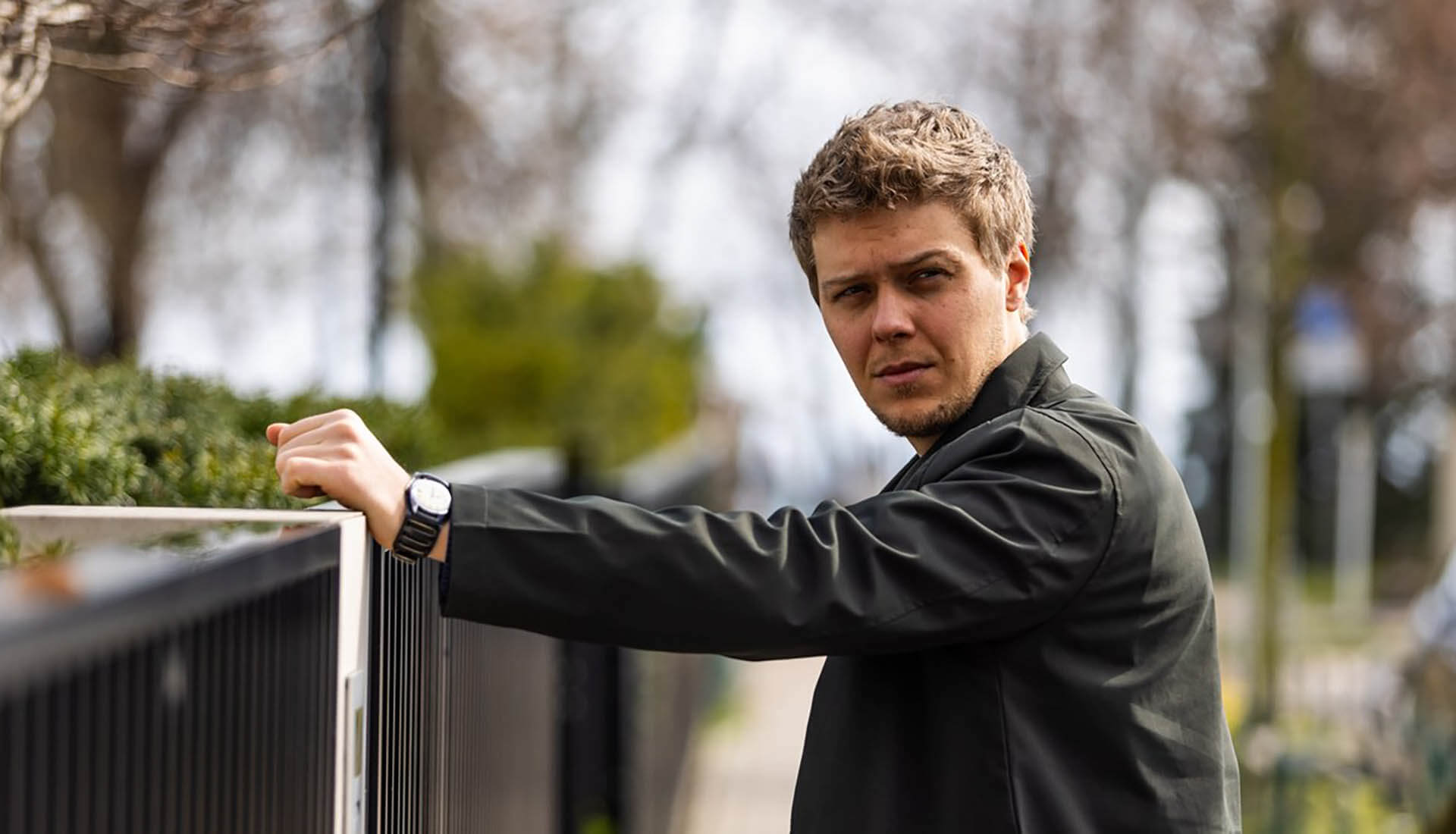COLORS OF EVIL: RED. At times it really gets the heart racing [REVIEW]

After the excellent “Return,” which combined science fiction with crime and psychological drama, Adrian Panek took on the challenge of adapting the first novel in Małgorzata Oliwia Sobczak‘s “Colors of Evil” series. And let me say right away, this challenge is not an easy one, and the director could have been overwhelmed by the brutality of the story told by the writer. He came close several times. The screenplay has dangerous shortcuts, sometimes falling into cliché, but the actors’ dramatic talents and emotional flexibility saved this production. “Colors of Evil: Red” stands somewhere between an exploitative crime film and a psychological drama with a slight noir tint. And here lies the biggest loss for the film – why didn’t Adrian Panek take more risks and delve into an even darker, aesthetically menacing, vividly suggestive direction for the viewers?
I never thought I’d write this, as crime series usually feel a bit drawn-out to me – they are too stretched out, and the climax often disappoints because it is too easy to guess. In the case of “Colors of Evil: Red,” I regret that it is not a series. The antagonist appears too quickly and although there is a twist related to him, which I won’t say isn’t surprising, the suspense balloon deflates, and the next plot twist cannot inflate it as masterfully as… If I wrote his name now, I would give everything away. The intrigue in the film is very thin, interesting but weak, with few levels, so revealing the slightest detail could spoil the fun for viewers in discovering who murdered whom and for what motives. Sometimes it feels like things are too easy for the characters – for example, Maja Ostaszewska frees herself from bonds too easily, and the supposed antagonist is almost casually captured by the anti-terrorist group. The action scenes paradoxically lack action, and Jakub Gierszał sometimes acts too uncertainly, at least dramatically, not as a prosecutor. The creators could have also done without the last, sugary scene. Overall, however, the film at times really gets the heart racing – it sits in clichés, although they could be stronger, which means that after this lengthy prelude, I have impatiently reached my main conclusion that “Colors of Evil” had the potential to start our Polish series about exceptionally brutal murderers in the style of “The Silence of the Lambs.”

“Colors of Evil”. A sense of lack
Now I know that “The Silence of the Lambs” this will not be. There are still chances to learn and deepen the psychological portrayal of prosecutor Bilski, who has strong potential thanks to Jakub Gierszał’s acting. The issue of subsequent murderers is not a problem given the imagination of the series’ author. The title of the series aptly describes the impact of the various ways crimes are committed and their motivations. It reminds me of the old film series “Faces of Death.” Of course, the themes are stylistically incomparable, but perhaps my interest in gore was slightly awakened by “Colors of Evil,” yet I crave much more. That’s why I feel a sense of lack, a kind of safe retreat by the director when showing violence. It was supposed to be intense, but it lacked the culmination of this madness, a deeper exploitation of human intimacy on an atavistic, purely criminological level. Perhaps, to meet such expectations, a much higher budget was needed. This also affected the post-production of the shots, which lacked some of the darkness of neo-noir cinema, although the characters psychologically tried very hard to enter this climate. And kudos to them for that. Generally, I was amazed by the quality of the acting. At times it may have been too dramatic and polished, especially with Maja Ostaszewska. Przemysław Bluszcz, however, is exceptional and proved it once again. I would happily see him in another installment of the “Colors of Evil” series. I was also surprised by the music – it wasn’t distinctive. It served a purely emotional function, although I can’t recall any motif that I could now hum a vista.

I also have an irresistible impression that the story idea and the film refer to the Polish “Bay of Art” case, although I can’t place both stories chronologically, specifically: when Małgorzata Oliwia Sobczak wrote the book and what information about the scandal was available to her at the time. Nevertheless, the association exists, regardless of whether it was intentionally evoked by the film. Therefore, I can wholeheartedly recommend this production to anyone looking for an unconventional crime film in Polish cinema, even if the consistency between the book and the adaptation is not crucial for them. One might also consider whether “Red” has any non-entertainment value, such as educational. Crime stories often carry such messages worth attention. Perhaps the book’s author, along with the director, wanted to highlight the problem of violence against women, sensitizing parents to certain details that often escape our attention when we assume that our daughters are old enough to not ask for help and thus everything is fine? Or maybe the film also contains a general warning for women not to take unnecessary risks and to be much more cautious in today’s world than men, following the rules of protective behavior when surrounded by highly masculine, testosterone-laden company? Overall, a solid 7/10, and you probably thought that with this number of reservations, at most 4. Well, sometimes reservations are not a devastating critique but pointers on what can be improved. In the case of “Colors of Evil,” they do not discredit the overall value of the production, whose themes I will ponder for some time after the screening, meaning that Adrian Panek has remained in the director’s saddle. He just needs to be even more emphatic in his narration.

